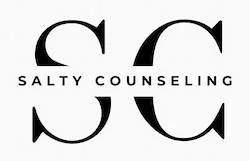How to Heal from Burnout: 7 Effective Strategies to Recover Your Energy and Thrive
At Salty Counseling in Salt Lake City, we help high-achieving professionals heal from burnout using somatic therapy, EMDR, and nervous-system-based care.
Burnout is a silent epidemic in today’s fast-paced culture. Whether it’s work stress, caregiving, or just trying to keep up, burnout can leave you mentally, emotionally, and physically drained.
If you're asking how to heal from burnout, you’re not alone—and you’re not broken. These seven gentle, research-backed strategies can help restore your energy and guide you back to balance. Learn how somatic techniques can support burnout recovery and energy restoration.
What Is Burnout?
Burnout is chronic stress that leads to exhaustion, reduced productivity, and a sense of detachment. Common symptoms include:
Constant fatigue
Loss of motivation
Emotional numbness or irritability
Trouble concentrating
Headaches, gut issues, or tension
The World Health Organization recognizes burnout as an occupational phenomenon, but it can stem from parenting, school, caregiving, or prolonged stress.
1. Prioritize Rest and Recovery
How to recover from burnout
Burnout recovery starts with rest—real rest. Try:
Taking breaks throughout your day
Practicing better sleep hygiene
Creating tech-free downtime
Saying “no” more often
Rest isn’t indulgent—it’s necessary. Short walks, quiet time, or even a weekend off can begin restoring your nervous system.
2. Set Healthy Boundaries
Setting boundaries to avoid burnout
Weak or blurred boundaries often fuel burnout. Protect your energy by:
Saying no to extra obligations
Turning off after-hours work notifications
Blocking off “unavailable” time
Establishing device-free hours
Boundaries aren’t walls—they’re bridges to well-being. As Brené Brown reminds us, clear is kind.
3. Reconnect with Joy and Purpose
Burnout recovery tips
Burnout recovery means rekindling joy. Consider:
Creative hobbies like writing, music, or art
Nature time or fresh air breaks
Mindfulness or meditation
Anything that grounds you in the present moment
Joy doesn’t have to be big—five intentional minutes can shift your entire day. For more, check Harvard Health.
4. Practice Gentle Movement
Exercise for burnout recovery
You don’t need intense workouts—just move gently:
Yoga, walking, or stretching
Dance or tai chi
Light cardio at your own pace
The Mayo Clinic notes that even low-impact activity reduces stress and boosts mood.
5. Create a Support System
Support for burnout
Healing doesn’t happen in isolation. Build support with:
Trusted friends and family
A licensed therapist
Online burnout recovery spaces
Peer groups for high-stress professions
The National Institute of Mental Health emphasizes social support as a key buffer against stress.
👉 Looking for guidance? Reach out to explore trauma-informed therapy support.
6. Simplify Your Routine
Simplify life to reduce burnout
Overpacked schedules fuel burnout. Simplify by:
Trimming your to-do list
Automating or delegating repetitive tasks
Using time-blocking to stay focused
Starting and ending your day with grounding rituals
As James Clear notes in Atomic Habits, small simplifications lead to lasting change.
7. Create a Long-Term Self-Care Plan
Long-term burnout recovery plan
Healing isn’t a one-time fix—it’s a lifestyle shift. Consider:
Daily self-care habits
Regular stress check-ins
Keeping boundaries in place
Tracking what drains or restores your energy
The Self-Care Wheel is a great tool for mapping your own plan.
Bonus Tip: Reflect Regularly
Reflect to prevent burnout
Take time to ask:
What’s working right now?
Where am I leaking energy?
Are my boundaries still intact?
Burnout isn’t failure—it’s feedback. The Greater Good Science Center recommends regular reflection as a key component of building resilience.
Final Thoughts: Be Gentle with the Process
Healing from burnout takes time—and that’s okay. Some days will feel better than others.
You’re allowed to rest. You’re allowed to reset. You’re allowed to return to yourself.
Ready to begin your healing journey?
🌿 Book a free 20-minute consultation to explore how trauma-informed therapy can help you recover from burnout.

